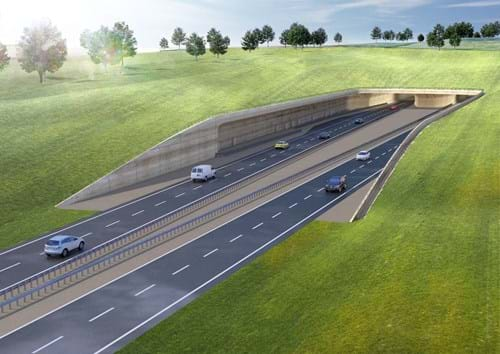
After years of pushback from archaeologists and heritage groups, the U.K. government has approved plans to build an underground highway near Stonehenge. The project has been estimated to cost £1.7 billion ($2.2 billion). Preparatory work could begin in 2024.
Transport secretary Mark Harper will move forward with the proposed rerouting of the A303 road, which runs across the south of England and passes right by the prehistoric monument, into a dual-carriageway tunnel that would remove the traffic from sight. Its old route will become a public walkway and cycle path.
A number of public bodies have warned against the project. The government agency Planning Inspectorate said it could cause “permanent, irreversible harm” and UNESCO threatened to strip the monument of its World Heritage Site status and place it on its danger list if the plan goes ahead.
As alternatives, UNESCO has advised either making the tunnel longer, which would improve the landscape by covering more of the new carriageway at greater public expense, or completely rerouting the A303 around Stonehenge. It believes that the current plan for a shorter, cheaper tunnel risks removing some of Stonehenge’s surrounding archaeological features and, by interrupting the landscape, adversely impacting the site’s integrity.
“The boundaries of the property capture the attributes that together convey Outstanding Universal Value at Stonehenge and Avebury,” the organization said on its website (“Outstanding Universal Value” is a term used by UNESCO to denote cultural or natural significance that is of common importance humanity). The statement added that these sites “are extensive, both being around 25 square kilometers (10 square miles), and capture the relationship between the monuments as well as their landscape setting.”
In a report justifying his decision, Harper said he has taken these concerns into account but concluded that the tunnel’s “harm on spatial, visual relations and settings is less than substantial and should be weighed against the public benefits.”
Historian and documentary presenter Tom Holland, who is chairman of the anti-tunnel lobbying group Stonehenge Alliance, commented on Twitter: “At the best of times this would be a grotesque decision, but at a time when the country is faced with so many bills, such a financial shortfall, this desecration of a World Heritage Site is the height of folly—an act of vandalism that shames Britain.”
Stonehenge is overseen by the charity English Heritage, which supports the government’s plans, as do Historic England and the National Trust. “Tens of thousands of vehicles thunder past Stonehenge on the A303 every day,” English Heritage said in a public statement. “The heavy traffic and constant noise from the road compromises our enjoyment and understanding of the monument and the road cuts the stones off from much of the surrounding ancient landscape.”
The tunnel was previously approved in November 2020 by the U.K.’s former transport secretary Grant Shapps, but a High Court ruled against the project in 2021.
More Trending Stories:
Influencers Are Realizing That A.I. Might Not Be a Magic Money-Making Machine For Artists After All